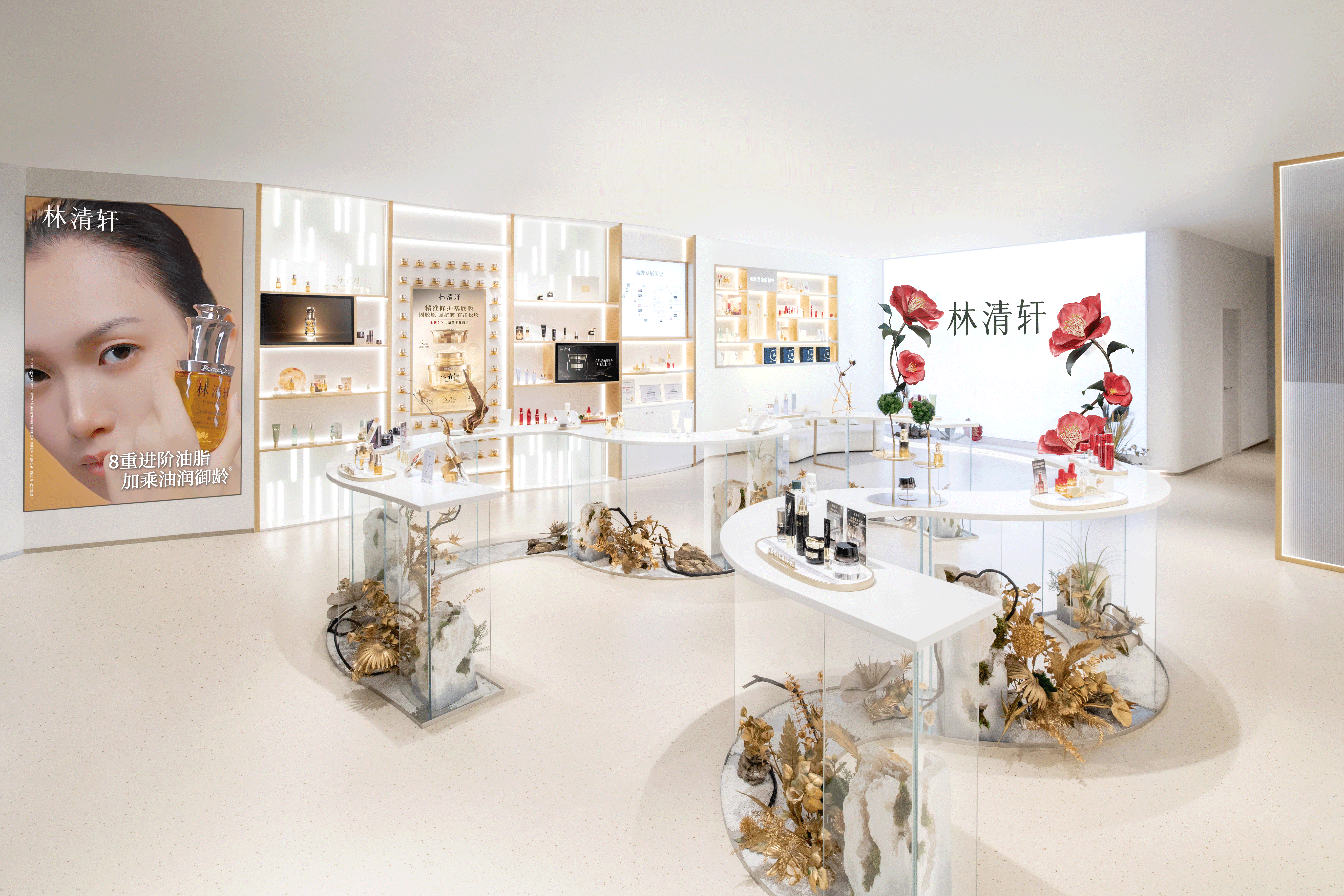On May 29, Forest Cabin submitted its prospectus to the Hong Kong Stock Exchange.
Founded in 2003, Forest Cabin focuses on natural ingredients and targets the premium skincare market, particularly in anti-wrinkle and firming products. In 2014, it launched its flagship product, the Forest Cabin Camellia Repair Essence Oil (Camellia Essence Oil), which laid the foundation for its oil-based skincare line. As of December 31, 2024, cumulative sales of the Camellia Essence Oil exceeded 30 million bottles, maintaining its position as the top-selling facial oil in China for 11 consecutive years.
Driven by its core hero product, Forest Cabin has experienced rapid growth over the past three years, achieving a leap in profitability. According to the prospectus, from 2022 to 2024, Forest Cabin’s revenue was RMB 691 million, RMB 805 million, and RMB 1.21 billion respectively, representing a compound annual growth rate (CAGR) of 32.5%.
Its gross profit margin remained stable at around 80%, and net profit in 2024 reached RMB 187 million, marking a 121% year-on-year increase.
According to data from CIC (China Insights Consultancy), based on 2024 retail sales, Forest Cabin ranked first among all premium domestic skincare brands in China. It is also the only domestic brand among the top 15 premium skincare brands in the country.
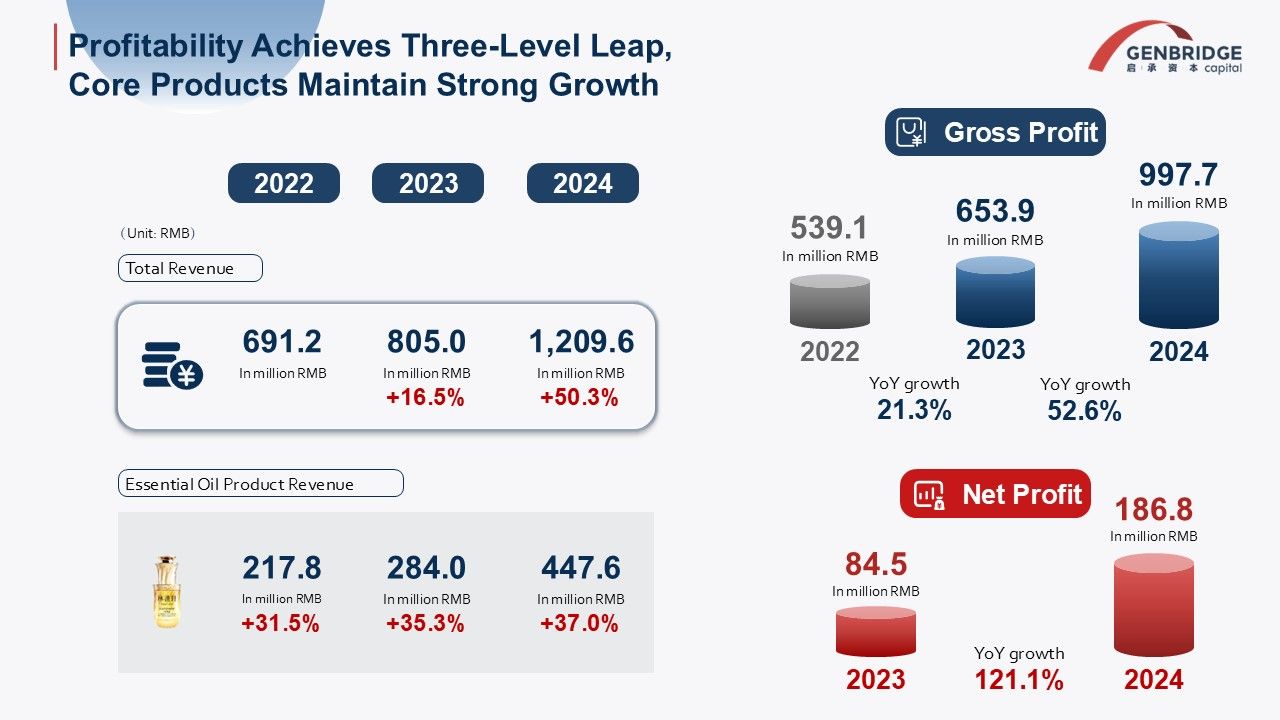
GenBridge Capital has long been searching across various industries for the next generation of national brand champions in China. The beauty and skincare sector, which combines functional efficacy with emotional appeal and strong brand identity, was historically dominated by international giants, who leveraged massive advertising budgets and superior distribution networks. Only in recent years have Chinese brands begun breaking through across different price tiers.
While many domestic brands have challenged global players by capitalizing on operational efficiency in mass-market categories, Forest Cabin has, through over a decade of persistence, carved out a space for Chinese brands in the premium segment, particularly within the high-barrier, high-mindshare category of facial serums.
George Wan, Partner of GenBridge Capital, notes that over what may seem like a "slow" ten years, Forest Cabin remained steadfast in its commitment to exceptional product quality and disciplined pricing. It also built a robust offline retail network focused on customer experience and cultivated a loyal, high-value user base. We believe this steady accumulation is the foundation for future exponential growth—Forest Cabin is poised to shine in direct competition with international premium brands.
The time is now for Chinese brands to replace global giants.
The aura of big brands fades as domestic alternatives rapidly rise
The past three years have been challenging for premium cosmetics in China. In 2022, L'Oréal’s luxury division saw its growth rate plunge from 21.3% the previous year to just 2%, while the mainland Chinese premium beauty market shrank from RMB 128 billion to RMB 125 billion.
Global giants such as Estée Lauder, Procter & Gamble, and Beiersdorf have since been retreating from the premium segment. Amid this downturn, Forest Cabin has posted three consecutive years of outsized growth—rising from RMB 691 million to RMB 1.209 billion, with a CAGR of 32.5%.
According to CIC (China Insights Consultancy), in 2024, China’s premium skincare market had retail sales of RMB 114.4 billion. The top 15 brands accounted for 66.1% of the market, and Forest Cabin ranked 13th, the only domestic brand in the top 15.
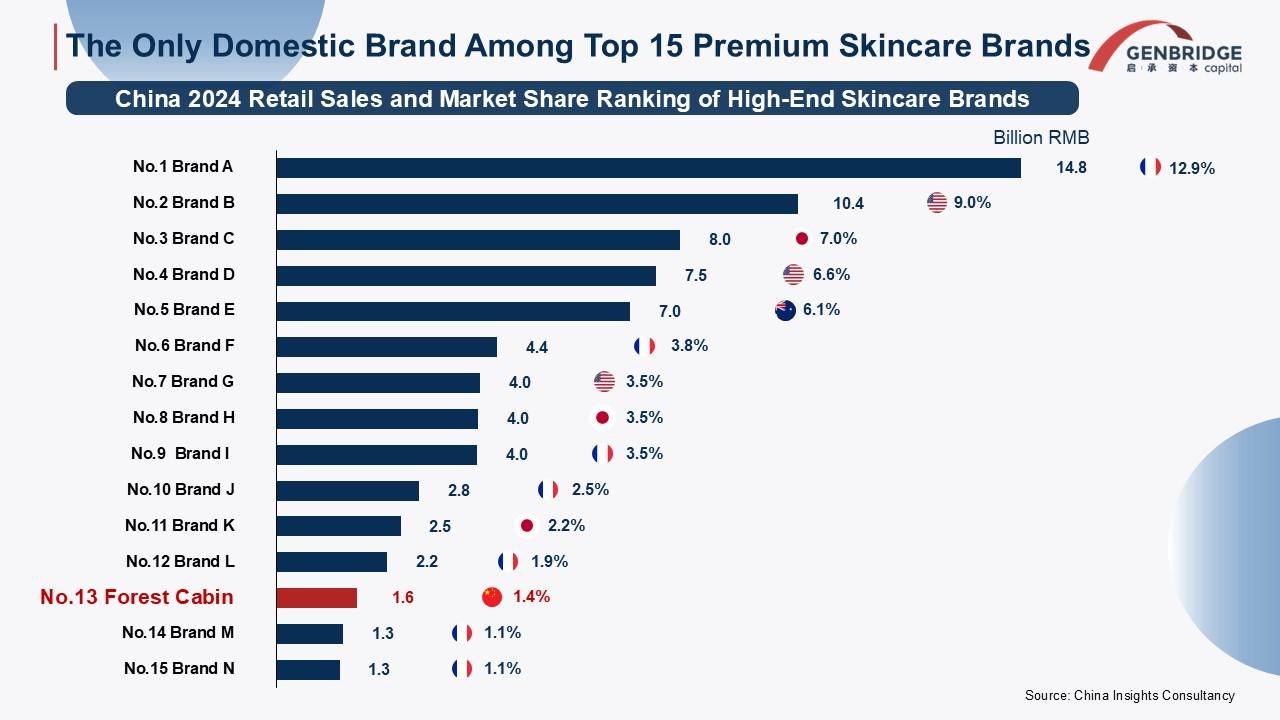
Behind Forest Cabin’s impressive growth lies a quiet transformation of China’s beauty and skincare industry. Structural changes in demand, supply, and distribution indicate that domestic brand substitution is emerging as the dominant narrative in the sector.
According to the 2023 China Cosmetics Yearbook published by Qingyan, the domestic beauty market reached RMB 797.2 billion in 2023, a yoy increase of 5.2%. Notably, domestic brands saw a 9.96% increase in annual sales and captured 50.4% of the market share, surpassing foreign brands for the first time.
On the demand side, as consumer confidence in local brands grows, the aspirational, symbolic narratives that once supported international luxury brands are losing their appeal. Consumers are now more concerned with actual product efficacy and scientific innovation, and research-driven purchasing is increasingly the norm.
Yet this shift in demand is not unfounded, it is driven by improvements on the supply side. Product excellence is the true cornerstone of domestic brand rise.
In terms of iteration speed, China’s robust manufacturing capabilities enable domestic brands to produce at quality levels on par with international names. Moreover, their adept use of DTC channels allows them to rapidly identify and adapt to changing consumer preferences.
As a result, domestic brands can quickly launch and iterate products in response to emerging needs. For instance, Estée Lauder’s iconic Advanced Night Repair serum was launched in 2009 and only received its second-generation update in 2020. In contrast, Forest Cabin’s Camellia Essence Oil has undergone five iterations in 11 years.
In terms of innovation, ingredients once exclusive to premium lines, like Pro-Xylane and Bifida Ferment Lysate, are now widely used by local brands and even found in mass-market products. According to CBO data, 69 new cosmetic ingredients were registered in 2023, with 78.3% of them developed by Chinese companies.
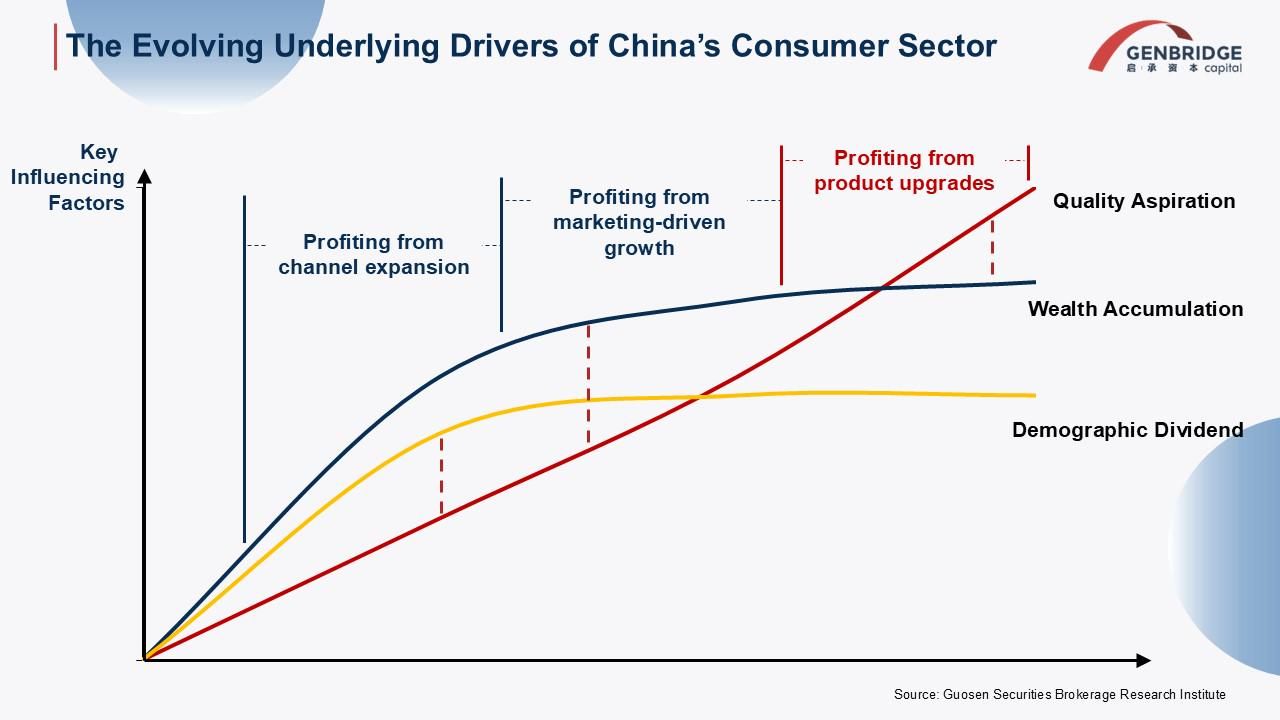
At the same time, the shift in online and offline traffic patterns, which combined with the ongoing fragmentation of media, has been a major driver of change on the distribution side of the industry.
In recent years, China has witnessed a wave of innovation in retail and marketing channels, with new business models emerging rapidly and often leading the world in their creativity and effectiveness. Traditional international brands have found it increasingly difficult to transplant their overseas distribution and marketing playbooks into the Chinese market.
As the data shows, each period of traffic dividend brought by new platforms has been dominated by domestic brands. Since 2022, many Chinese players have leapfrogged international competitors via Douyin e-commerce, fully embracing new formats like livestreaming commerce and short-form dramas to drive rapid sales growth.
According to third-party data from the National Bureau of Statistics and Euromonitor, China’s beauty industry entered a phase of stock-based consolidation starting in 2022. The turning point came during the 2023 Double Eleven shopping festival, after which domestic brands began to gain a clear edge in market share.
The combined forces of shifting demand, supply-side innovation, and new distribution dynamics have fundamentally restructured the competitive landscape of China’s beauty and skincare sector. Forest Cabin, as a leading example of Chinese premium brands, has demonstrated a sharp sensitivity to consumer needs and an ability to seize early opportunities in emerging channels, allowing it to rapidly surpass international brands.
George Wan believes that as the mystique surrounding international beauty brands fades, and domestic supply chains reach parity or even outperform their global counterparts, local brands, backed by closer proximity to consumers and greater full-chain operational efficiency, are well-positioned to rise in the beauty and skincare industry.
Historically, international brands’ long value chains led to significant price markups, leaving ample room for domestic brands to define a premium pricing strategy of their own. Forest Cabin has broken through by adopting a pricing position of “domestic premium, luxury-alternative,” offering high-end efficacy with accessible pricing.
Technology-driven growth, led by signature product
In the world of premium skincare, international giants have long dominated with their iconic hero products, especially in the fiercely contested serum category. Forest Cabin strategically entered this high-value battleground by focusing on the sub-category of essence oils, a niche that bridges moisturization and repair and commands both high volume and high ticket value.
At the core of Forest Cabin’s growth strategy is its commitment to underlying technological innovation. Its product ecosystem which built around one hero product, four core categories, and more than ten product series, has become the engine for sustainable expansion. As of December 31, 2024, Forest Cabin offered 188 SKUs, spanning product types such as essence oils, creams, toners, emulsions, serums, face masks, and sunscreens.
Leading the portfolio is its iconic Camellia Repair Essence Oil, which has undergone five iterations since its debut in 2014. With over 30 million bottles sold to date, it has remained the No. 1 facial essence oil in China for 11 consecutive years.
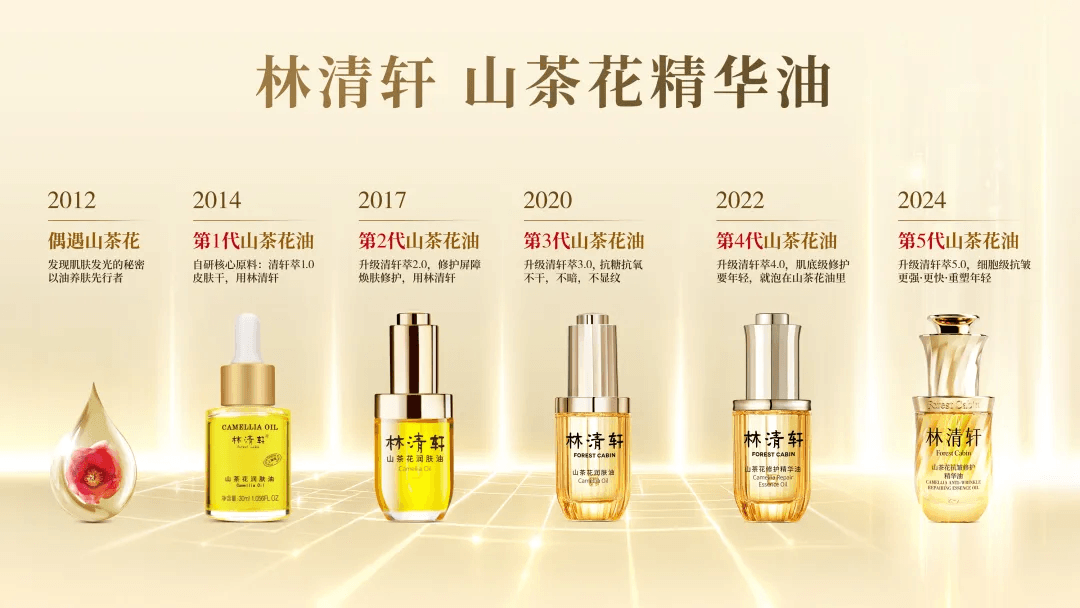
During last year’s Double Eleven shopping festival, Forest Cabin recorded RMB 140 million in sales on Tmall alone. In 2024, China’s facial essence oil market reached a total value of RMB 5.29 billion, with Forest Cabin accounting for RMB 657 million, representing a 12.4% market share and a significant lead over the second-ranked brand.
The popularity of Forest Cabin’s Camellia Repair Essence Oil has been closely tied to the ongoing rise of the facial essence oil category. According to the 2024 Skin Nourishment Through Oil Market Trends report, oil-based skincare products on Alibaba platforms exceeded RMB 5 billion in sales, marking a year-on-year growth of 5.8%. Meanwhile, on Douyin, sales of facial essence oils grew by an impressive 87.43%.
“Skin nourishment through oil” has become one of the most prominent skincare trends in recent years. Forest Cabin was a pioneer in this field, introducing the concept as early as 2014 with the launch of the first-generation Camellia Repair Essence Oil.
As the only company in China’s facial essence oil segment to achieve full value-chain integration of its core ingredients, Forest Cabin developed its proprietary active complex Qingxuan Extract, which is derived from camellia seed oil and camellia flower/leaf extracts. By integrating biotechnology and patented processing techniques, the company has built a robust, end-to-end innovation barrier—from raw ingredient cultivation to product R&D and production.
On the sourcing side, since 2012, Forest Cabin has been committed to identifying botanicals unique to China, most notably the alpine red camellia. After screening more than 10,000 varieties, the company selected red camellia plants that grow at elevations above 800 meters in regions located between 113°–120°E and 25°–31°N. Research shows that these high-altitude red camellias contain approximately 1.5 times more antioxidant active compounds than those grown at lower altitudes.
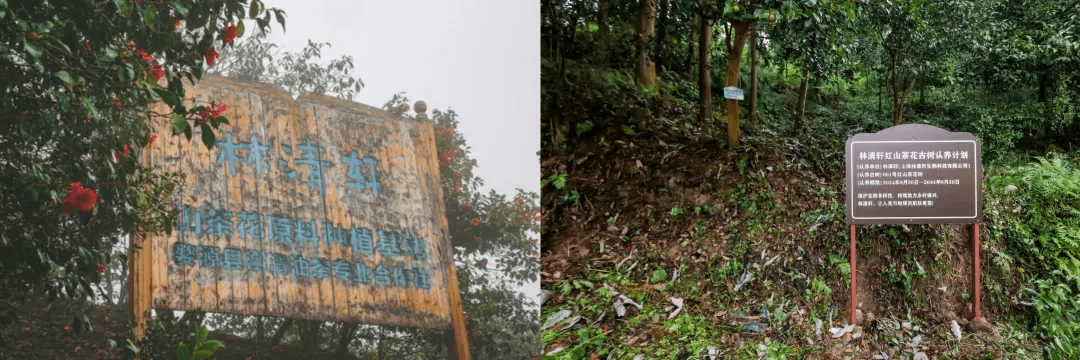
Forest Cabin spares no effort in its commitment to R&D. The company insists on innovation starting from raw ingredients, conducting deep research from formulation to raw material selection and down to cell-level experimentation. It holds three core patented technologies for anti-aging and repair and has accumulated 80 patents in total, including 42 invention patents. Forest Cabin has also led or participated in the formulation of over 30 industry standards. These achievements have built a formidable technological moat, enabling the brand to compete on equal footing with leading international players in both product efficacy and quality.
On the industrial front, Forest Cabin has established partnerships with numerous high-quality upstream and downstream Chinese suppliers of raw materials and packaging. Its nearly RMB 300 million investment in a carbon-neutral R&D and intelligent manufacturing facility officially went into operation last year, further empowering the creation of innovative concepts and products.
In its early entrepreneurial stage, Forest Cabin focused on building consumer awareness around essence oil, eventually becoming synonymous with the high-end essence oil category in China. Today, centered on its hero ingredient camellia, the brand has expanded into a four-pillar product matrix: essence oil, face cream, serum, and sunscreen.
During last year’s Double Eleven, Black Gold Cream recorded RMB 16 million in sales on Tmall, helping boost Forest Cabin’s total Tmall GMV to RMB 258 million, a 96% yoy increase.

Backed by years of technical expertise, Black Gold Cream saw explosive growth in 2024, generating RMB 61.5 million in sales. According to the 2024 Facial Cream Category Trend Insight Report by Beauty Research Institute, Forest Cabin claimed a leading position on Tmall in this category, with “targeted anti-aging” and “advanced actives” as its defining keywords.
As of now, product contribution by category is as follows: Camellia Repair Essence Oil accounts for 37% of total sales as the core hero product; face creams, led by Black Gold Cream, contribute 15.7%; and the remaining sales come from serums, sunscreens, and other categories that continue to grow.
In its prospectus, Forest Cabin laid out a clear strategy: to continue building around its core SKUs while expanding the product matrix. The company also plans to launch more diversified offerings for a broader range of application scenarios, with particular focus on capturing the under-25 demographic.
Brand compounding through omnichannel strategy
The past decade belonged to e-commerce. However, as George observes, for any brand to thrive in the next decade, offline presence will be essential, it will be the root system that supports sustainable growth.
Offline channels have given rise to best-selling products that meet more universal consumer needs. Once these products are coupled with a sound pricing structure and innovative content to connect with online channels, they are poised for strong rejuvenation and breakout growth.
In early 2020, at the onset of the pandemic, Forest Cabin was forced to shut down all 157 of its offline stores. Faced with crisis, the company pivoted quickly, entering livestream channels and shifting its business model online. With online platforms as the entry point for traffic, offline channels were repurposed to provide service and experiential retail, while private domain operations and CRM systems were used to re-engage fans—forming a closed-loop “OMO (Online-Merge-Offline)” model.
Forest Cabin has leveraged IP storytelling, internal livestream rooms, partnerships with KOLs/KOCs, and official brand stores across major e-commerce platforms to drive rapid online growth. From 2022 to 2024, its online revenue grew at a compound annual growth rate (CAGR) of 51.2%.
While accelerating online expansion and capitalizing on platform traffic dividends, Forest Cabin has also doubled down on its offline strategy.
Between 2022 and the end of 2024, the number of Forest Cabin stores increased from 366 to 506. Over 95% of these stores are located in shopping malls, and 67.5% are directly operated, significantly outpacing other domestic high-end skincare brands in China.
Beyond experiential flagship stores, Forest Cabin is also expanding its presence on retail shelves to achieve broader national coverage. Starting in August 2024, the company began building out its CS (Cosmetic Store) channel, and has since onboarded 52 distributors covering nearly 3,500 cosmetics stores across the country, including a large share in lower-tier cities and rural markets.
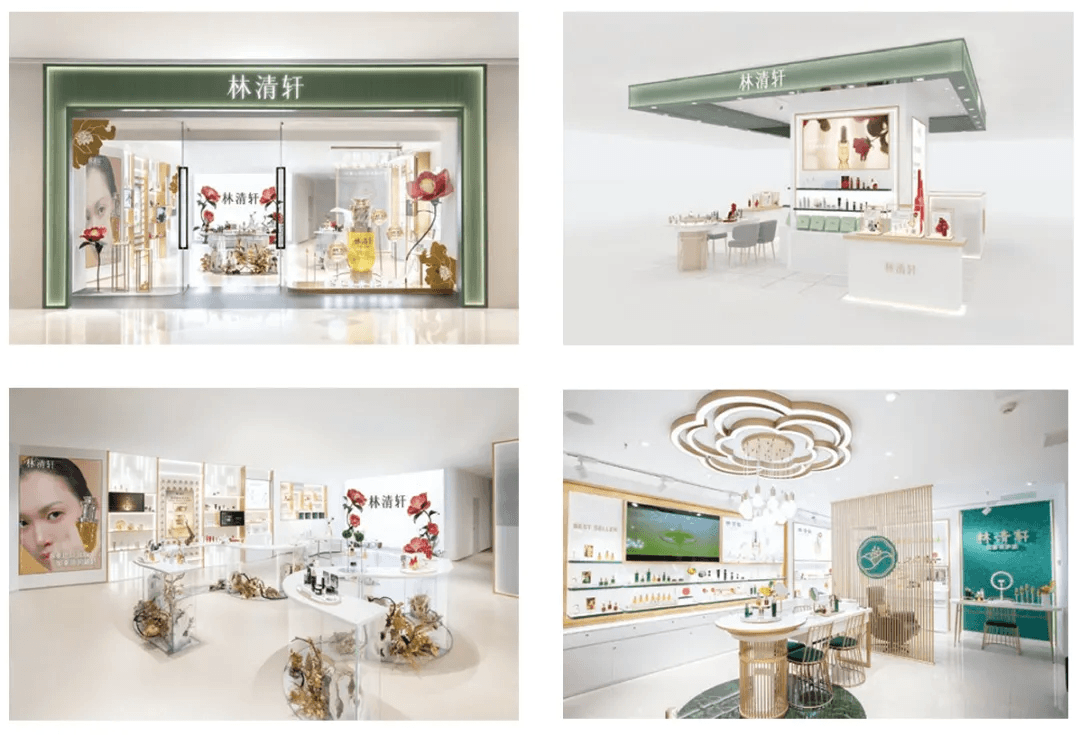
The value of offline retail channels is particularly pronounced in lower-tier cities. According to a BCG report, 40% of newly acquired high-end beauty consumers in China now come from Tier 3 and below, even though these cities currently account for only 30% of the total consumer base. Nielsen data shows that in 2023, the number of Tier 3 cities grew by 9.1% year-over-year, with 538 new beauty counters added nationwide.
In 2024, luxury beauty brand Lancôme expanded into shopping malls in Tier 3 cities like Changji (Xinjiang) and Jinhua (Zhejiang), while La Mer entered non-first-tier markets such as Changchun and Lanzhou. Of all newly added counters, 9% were located in lower-tier markets, further validating the untapped potential of premium consumption in these cities.
For Forest Cabin, while online traffic has enabled rapid short-term growth, it is strong product performance and refined customer service that form the foundation of long-term, sustainable brand development.
More specifically, offline brand stores serve not only as sales points, but also as critical touchpoints for conveying brand culture and product value. They allow the brand to deliver tailored skincare solutions to consumers in a personalized, trust-building environment.
Through the combined force of online and offline efforts, Forest Cabin has cultivated a highly engaged and loyal consumer base. During the reporting period, the brand had over 4.3 million active users, with an average annual repurchase rate of 34.6%.
This high-value customer segment targeted by Forest Cabin represents the most stable cohort within the high-end skincare market.
According to a classification by Goldman Sachs, high-end beauty consumers fall into three tiers based on annual spending:
- “Entry-level” consumers spend less than RMB 3,000 on skincare and less than RMB 1,500 on makeup annually;
- “Mid-tier” consumers fall in between;
- “High-value” consumers spend over RMB 8,500 on skincare and over RMB 6,000 on makeup.
As of 2022, annual spending among entry-level, mid-tier, and high-value consumers changed by -9%, -1%, and +1% respectively—highlighting the greater resilience of high-value consumers in the premium segment.
Premiumization is a long-term journey. In the view of Laichun Sun, founder of Forest Cabin, becoming a high-end brand requires four stages: pioneering in new categories, establishing a robust R&D system, building self-operated channels, and cultivating a distinct brand spirit.
Guided by its vision of “making the skin of humanity and the Earth more beautiful,” Forest Cabin entered the market through a single breakthrough product, Camellia Facial Oil, and quickly became a category pioneer. From there, the brand gained control of its core raw materials (wild camellia from China), built in-house R&D and manufacturing capabilities, and constructed a full-industry-chain barrier. Supported by deep offline cultivation and accelerated online traffic acquisition, Forest Cabin achieved a compound annual growth rate of 32.5%, eventually becoming the only domestic brand among the Top 15 high-end skincare companies in China.
Forest Cabin’s rise mirrors the broader evolution of Chinese brands. The journey of domestic substitution has moved from supply chain and product substitution to channel replacement, and has now entered the era of brand substitution.
GenBridge Capital looks forward to supporting Forest Cabin on its journey to becoming a next-generation national brand of China—and ultimately, a global one.


